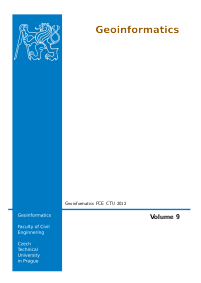Panoramic UAV Views for Landscape Heritage Analysis Integrated with Historical Maps Atlases
DOI:
https://doi.org/10.14311/gi.9.4Keywords:
landscape heritage, UAV, image orientation, panoramic views, historical mapsAbstract
Analysis of landscape heritage and territorial transformations dedicated to its protection and preservation rely increasingly upon the contribution of integrated disciplines. In 2000 the European Landscape Convention established the necessity ‘to integrate landscape into its regional and town planning policies and in its cultural, environmental, agricultural, social and economic policies’. Such articulated territorial dimension requires an approach able to consider multi-dimensional data and information from different spatial and temporal series, supporting territorial analysis and spatial planning under different points of view. Most of landscape representation instruments are based on 3D models based on top-down image/views, with still weak possibilities to reproduce views similar to the human eye or map surface development along preferential directions (e.g. water front views). A methodological approach of rediscovering the long tradition of historical water front view maps, itinerary maps and human eye maps perspective, could improve content decoding of cultural heritage with environmental dimension and its knowledge transfer to planners and citizens. The research here described experiments multiple view models which can simulate real scenarios at the height of observer or along view front. The paper investigates the possibilities of panoramic views simulation and reconstruction from images acquired by RC/UAV platforms and multisensory systems, testing orthoimage generation for landscape riparian areas and water front wiew representation, verifying the application of automatic algorithms for image orientation and DTM extraction (AtiPE, ATE) on such complex image models, identifying critical aspects for future development. The sample landscape portion along ancient water corridor, with stratified values of anthropogenic environment, shows the potentials of future achievement in supporting sustainable planning through technical water front view map and 3D panoramic views, for Environmental Impact Assessment (EIA) purposes and for the improvement of an acknowledged tourism within geo-atlas based on multi-dimensional and multitemporal Spatial Data Infrastructures (SDI).Downloads
Published
2012-12-22
Issue
Section
Articles
License
- Authors retain copyright and grant the journal right of first publication with the work simultaneously licensed under a Creative Commons Attribution License that allows others to share the work with an acknowledgement of the work's authorship and initial publication in this journal.
- Authors are able to enter into separate, additional contractual arrangements for the non-exclusive distribution of the journal's published version of the work (e.g., post it to an institutional repository or publish it in a book), with an acknowledgement of its initial publication in this journal.
- Authors are permitted and encouraged to post their work online (e.g., in institutional repositories or on their website) prior to and during the submission process, as it can lead to productive exchanges, as well as earlier and greater citation of published work (See The Effect of Open Access).

